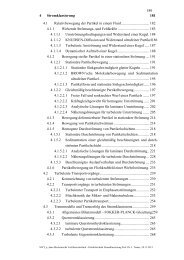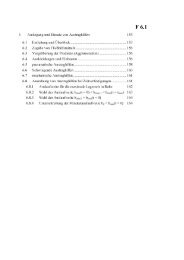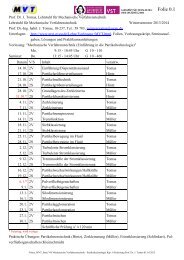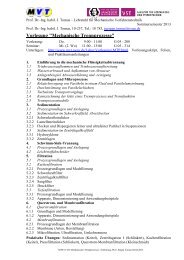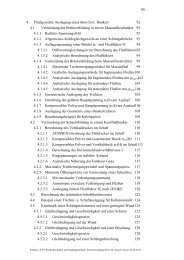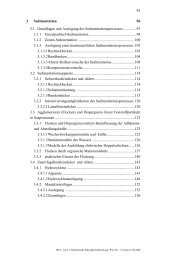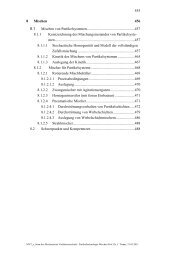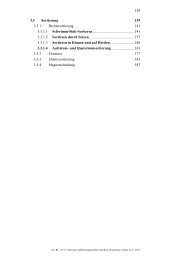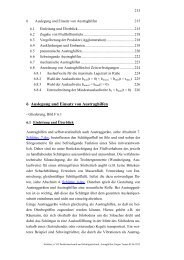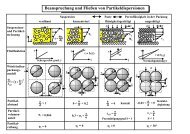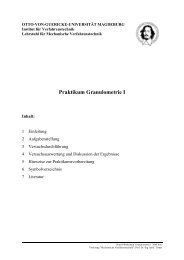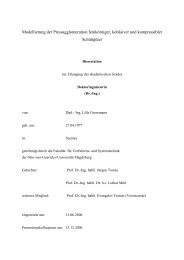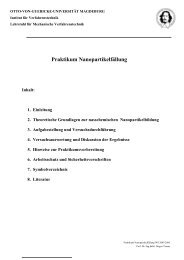Abstract Keywords:
Abstract Keywords:
Abstract Keywords:
Create successful ePaper yourself
Turn your PDF publications into a flip-book with our unique Google optimized e-Paper software.
Introduction<br />
The aim of this research is to study the crack initiation and propagation in the<br />
building materials of spherical model like concrete ball while subjected to impact. The<br />
efficient way of cracking allows to get the valuable aggregates as the recycled<br />
products. In Germany in 1995, the annual occurance of building rubble was about 30<br />
Mt [1]. Most of the recycling products are still used as low quality materials. To<br />
produce the high quality products from recycling with the minimum of same product<br />
quality as the primary materials had, the efficient method must be adopted. The<br />
crack initiation and propagation in the concrete ball was dealt in the paper by Tomas<br />
et. al. [2]. Different research papers are available in the investigations of liberation of<br />
aggregate from the matrix [3,4] though the model material is different than the<br />
concrete ball. Single particle crushing experiments were done to investigate whether<br />
impact, double impact or compression stressing is more suitable for efficient cracking<br />
to get the better utilization of the valuables from the comparitively cheaper matrix.<br />
Spheres with only a diameter of 10 mm consisiting of sand particles embedded in<br />
hardened cement paste were used as a mineral model material by Kiss and Kiss et.<br />
al. [3,4]. Arbiter et. al. [5] produced spheres - a mixture of flint-shot sand particles<br />
and high early strength cement and water – with a diameter of 74 to 124 mm for<br />
free fall tests with stressing velocity of only up to 7.6 m/s. The goal of this was<br />
mainly to observe the crack formation and fracture patters.<br />
All these specimens used do not correspond to a real concrete composition in civil<br />
engineering [6]. The stressing conditions in recycling practice [7] are also quite<br />
different from it. It is shown from Schubert [8] that if the feed is stressed by impact<br />
or double impact, the material has a higher fracture probability than for compression<br />
stressing.<br />
Though, literatures are available for cracking in concrete structures with the<br />
application of finite element analysis, very few of these papers deal with the crack<br />
initiation and propagation in the concrete sphere when its subjected to impact. The<br />
cracking in the spherical model materials are carried out mainly in engineering<br />
agglomerates rather than in the concrete material. The concrete is also considered as<br />
the particle compound material like other engineering agglomerates. The cracking<br />
phenomena is different in sphere as compared to other regular structures in impact.<br />
The stresses for the elasto-viscoplastic conditions with FEM simulations for the<br />
sphere was investigated by Kienzler and Baudendistel [8]. But many literatures are<br />
available with the DEM simulations for the similar case of agglomerates. The DEM<br />
simulation for the impact breakage of spherical agglomerates were carried out by<br />
Kafui and Thornton [9] and Thornton et. al. [10, 11]. Mishra et. al. [12] shows the<br />
the different parameters influencing the breakage of agglomerates in impaction.<br />
Similarly, the solid particle failure under normal and oblique impact in aluminium<br />
oxide of diameter 5.15 mm was studied by Salman and et.al. [13]. The impact and<br />
compression tests for the soda lime glass spheres of diameter range 0.4-12.7 mm<br />
was presented by Salman and et. al. [14]. With DEM simulation the effect of impact<br />
angle on the breakage of agglomerates was carried out by Moreno and et. al. [15].<br />
Becauseof material heterogenity, it is noted that the deformation and fracture of



